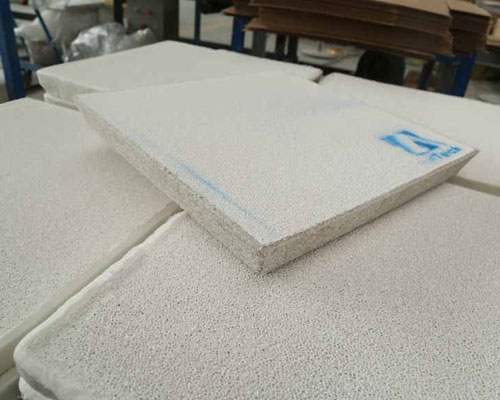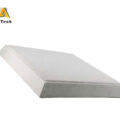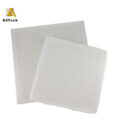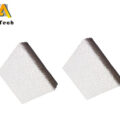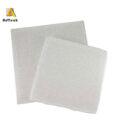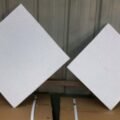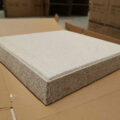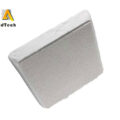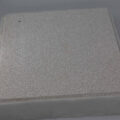During the 1980’s there was rapid and widespread market acceptance of ceramic foam filtration technology for a broad range of high quality fabricated aluminum products including rigid packaging materials, lithographic sheet, aerospace products such as sheet, plate, forgings and extrusions; bright finish trim, condenser tubing, foil, architectural extrusions, foundry alloys and electrical conductor cable and wire.
The subsequent rapid market acceptance and growth of the ceramic foam filtration technology into aluminum cast houses of all types and levels of sophistication was due to the following reasons:
- Ease of use and operator acceptance;
- Operational flexibility;
- Ability to drain after every cast;
- Low variable operating cost;
- Low capital installation cost;
- Effective inclusion removal;
- Small foot requirements which equated to minimal floor space required for installation.
The earliest commercial ceramic foam filters were based on a chrome-alumina grain material, an aluminum orthophosphate binder and bentonite/kaolin additives to enhance slurry rheology. The chrome-alumina grain was relatively expensive and created a potential disposal problem due concerns regarding potential hexavalent chrome which is a known carcinogen. The chrome-alumina formulation was subsequently replaced by an “all alumina” formulation that incorporated alumino-silicate fiber and a mineral colloid, clay additive, while still utilizing the aluminum orthophosphate binder system of the chrome-alumina filters.
This “all alumina” filter formulation has subsequently been widely used worldwide and has become the “industry standard” for ceramic foam filters used in aluminum cast houses for over 25 years. Despite the wide spread use of aluminum phosphate bonded alumina foam filter, there are several significant shortcomings to this filter formulation. The aluminum phosphate filters have poor thermal shock resistance, have a tendency to develop lateral compressive failures, lose strength during use due to attack of the aluminum phosphate bond; it has poor resistance to chemical attack and erosion of the filter structure. Further, phosphine gas can be generated from used filters, which complicates disposal.
The use of alumina grain in a ceramic foam filter would seem to be an obvious choice to anyone familiar with refractory materials used to contain molten aluminum and it’s alloys. Alumina is relatively chemically inert in molten aluminum and it’s common alloys, including those containing magnesium. It is also widely used as a grain material in refractories used in furnaces to both melt and hold molten aluminum alloys.
Further, before the development of the one-shot disposable ceramic foam filter, tabular alumina bed filters were used to filter molten aluminum. Bed filters are large heated vessels containing un-bonded tabular alumina grains that are used for repeated casts over a period of several days or even weeks. The long exposure time of the molten metal to the un-bonded aggregate materials as in bed filters and refractories requires the use a chemically inert grain material such as alumina.

